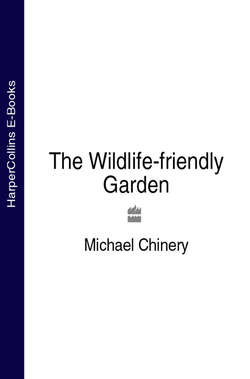Читать книгу The Wildlife-friendly Garden - Michael Chinery - Страница 9
A healthy garden
ОглавлениеIt took millions of years for nature to build up an equilibrium, in which each plant and animal species has its place and in which each helps to keep the rest under control. Nothing lives alone in nature, for every creature either eats or is eaten by one or more other creatures. We have destroyed much of this delicate balance, but it is still not too late to put the process into reverse.
WHAT GOOD ARE MOSQUITOES?
This question is commonly asked by many people who have been bitten by these insects. Mosquitoes don’t do us any good, of course, but, in common with all other living things, they form part of nature’s intricate web and have a role to play in nature’s economy. From the point of view of a hungry swallow or a stickleback, mosquitoes are actually quite good!
Restoring the balance
The key thing is to live and work with nature, steering it in the direction we want in our gardens instead of destroying it completely. If we can achieve an approximation to nature’s balance of predators and prey, then no one species will be able to multiply to such an extent that it becomes a nuisance. By creating some natural habitats in your garden you will inevitably attract their characteristic wildlife. Trees and shrubs, for example, attract birds; ponds are magnets for frogs and toads; and flower beds pull in many colourful insects. These guests will add considerable interest to your garden and will also do much to keep down the less desirable visitors – the pests. They will not eradicate the pests, but the amount of damage is likely to be minimal and you will be able to boast a healthy garden with a balanced ecology.
CJ Wild bird Foods/David White
Although few of these young spiders, just hatched from their eggs, will survive to become adults, undoubtedly they will eat a lot of insects before themselves falling prey to various enemies.
A TYPICAL GARDEN FOOD WEB
Michael Chinery
CJ Wild bird Foods/David White
Colin Varndell
Moth feeds on nectar; spider eats moth; blackbird eats spider. This is a typical food chain. Another example might be plant; insect; vole; fox. Many more such chains can be observed in the garden, and it quickly becomes obvious that these chains are all linked together in a web – because most animals eat more than one kind of food. Blackbirds, for example, are equally happy with earthworms and elderberries, while the bank vole may vary its normally vegetarian diet with snails and fungi as well as insects. Just a few of the chains in a garden food web are illustrated here, with the arrows pointing from the food to the consumers. You will find that each chain starts with a plant. With each species kept in check by its predators and/or food supplies, the whole community remains in a healthy equilibrium.
